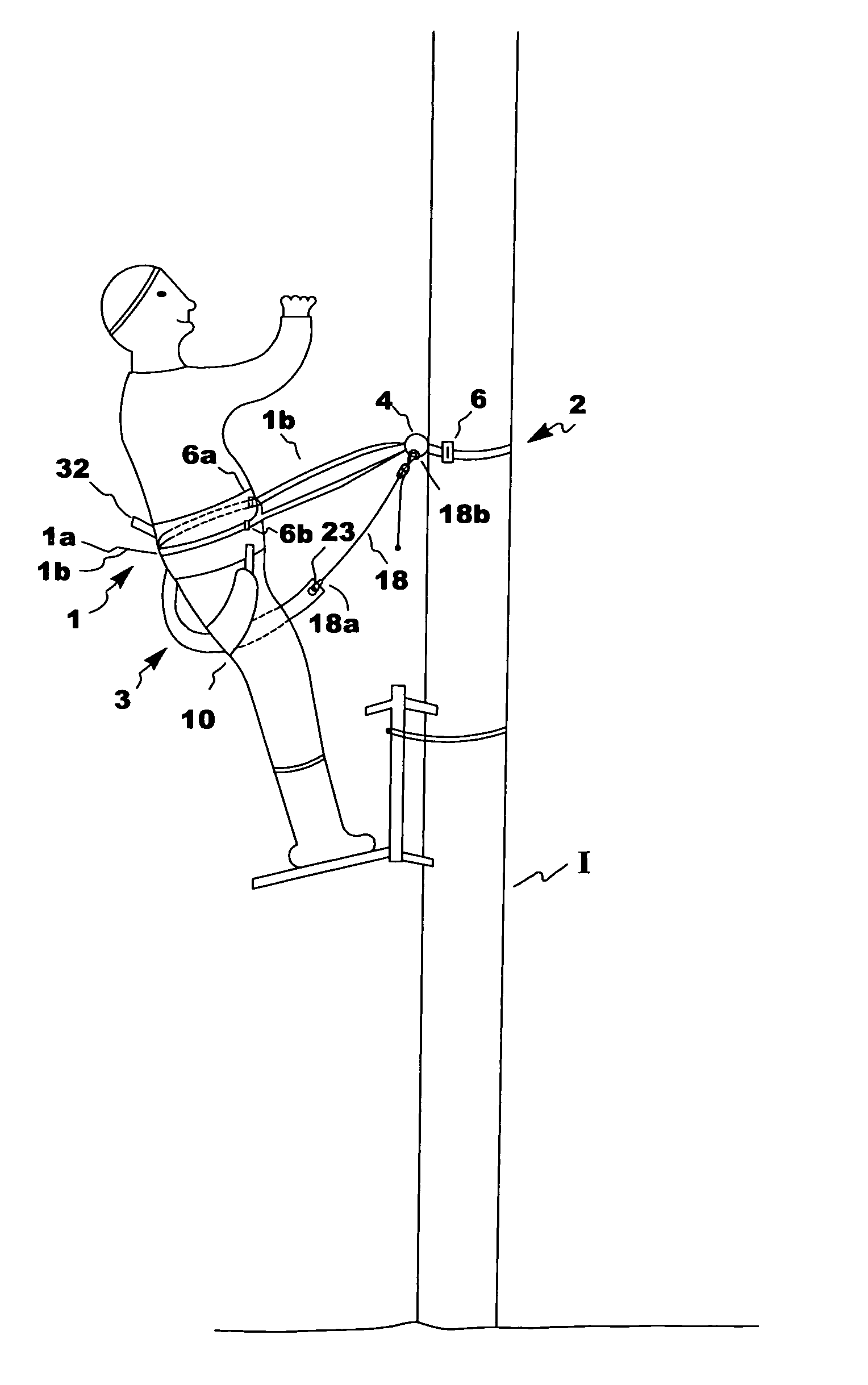Safety harness
a safety harness and harness technology, applied in the direction of safety belts, cleaning equipment, sport apparatus, etc., can solve the problems of injury to the individual and death from suspension trauma
- Summary
- Abstract
- Description
- Claims
- Application Information
AI Technical Summary
Benefits of technology
Problems solved by technology
Method used
Image
Examples
Embodiment Construction
[0012]The invention relates to a safety restraint device of a configuration and shape particularly suitable for use by hunters in treestands, wherein the device is used to secure the user to the tree so that the user may move about freely without fear or possibility of falling from the stand. Those skilled in the art will recognize that treestands are typically utilized approximately 10 to 25 feet above the ground thereby inducing anxiety of falling or inadvertent falls. As those skilled in the art will recognize, treestands are well known in the art and therefore, will not be described further herein.
[0013]The anchor member (2) is connected to a tree or other suitable object. The anchor member (2) strap is generally 1 to 4 inches wide, and attached thereto is a round or oval ring approximately 3-5″ (4) in diameter and a D-ring (13) is attached approximately 3.5″ from the round or oval ring (4). The strap has a buckle on one end and on the opposite end it has a round metal grommet a...
PUM
 Login to View More
Login to View More Abstract
Description
Claims
Application Information
 Login to View More
Login to View More - R&D
- Intellectual Property
- Life Sciences
- Materials
- Tech Scout
- Unparalleled Data Quality
- Higher Quality Content
- 60% Fewer Hallucinations
Browse by: Latest US Patents, China's latest patents, Technical Efficacy Thesaurus, Application Domain, Technology Topic, Popular Technical Reports.
© 2025 PatSnap. All rights reserved.Legal|Privacy policy|Modern Slavery Act Transparency Statement|Sitemap|About US| Contact US: help@patsnap.com



